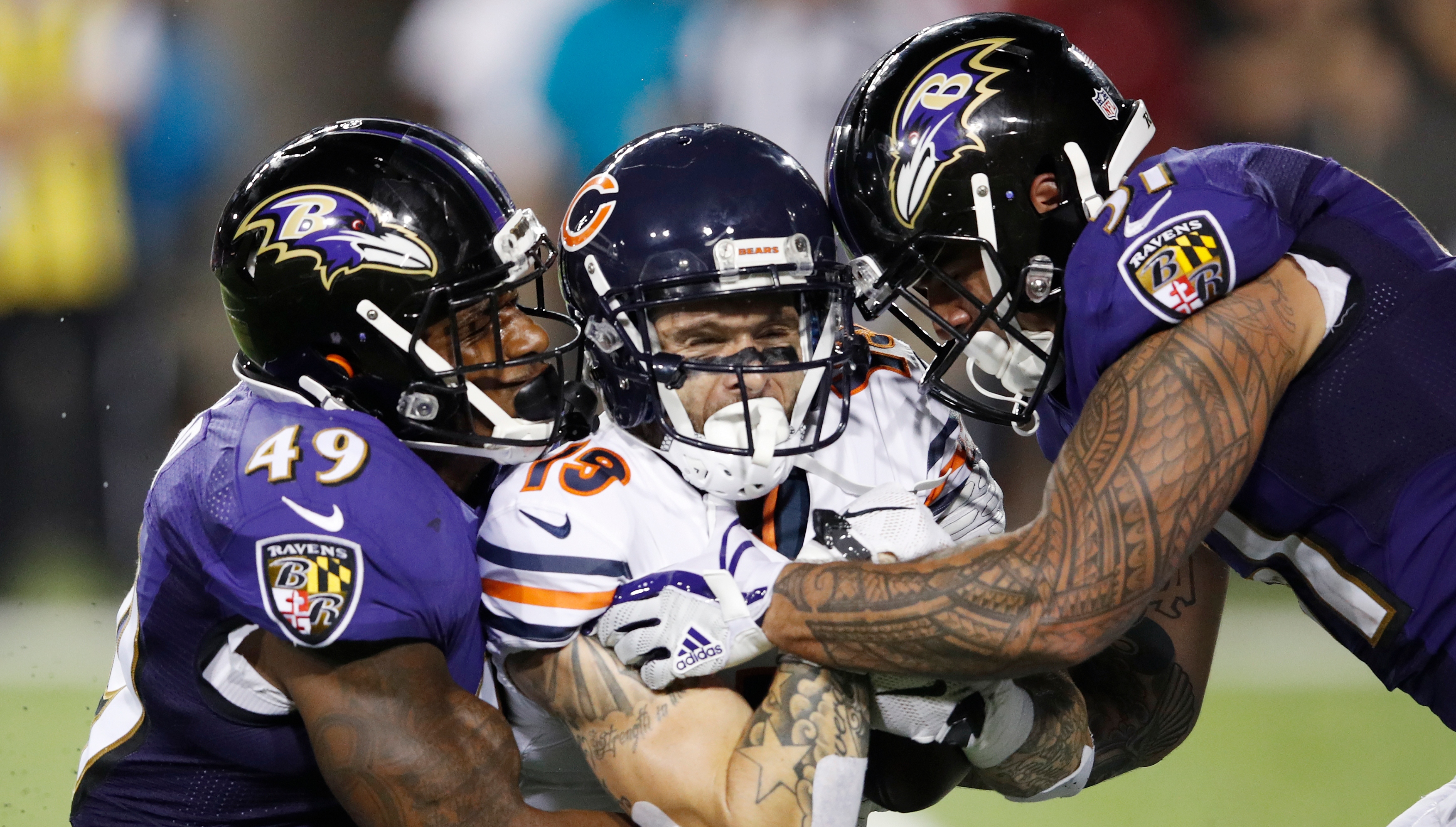
One storyline that will be inescapable this NFL preseason is the new helmet-to-helmet rule and its impact on the game.
It’s taken all of one preseason contest for everyone to be up in arms about the change, as the Hall of Fame Game between the Chicago Bears and Baltimore Ravens raised concerns surrounding the enforcement of the rule.
If you were on Twitter during the clash, you saw plenty of chatter deriding the referees’ decision to toss the flag and bemoaning the end of football as we know it.
In reality, the new rule was applied only twice, with the Ravens being flagged for 15-yard penalties on both occasions.
The first came when linebacker Patrick Onwuasor nailed Bears running back Benny Cunningham in the first quarter, while the other was on linebacker Kamalei Correa for his hit on Chicago receiver Tanner Gentry.
Use of helmet penalty.
— Steelers Depot (@Steelersdepot) August 3, 2018
Learn it. Know it. Live it.pic.twitter.com/LY2nPy40Hk
Both penalties were clear violations of the new rule, which makes it illegal for players to lower their heads to initiate a hit with their helmet. Mild infractions will result in a 15-yard penalty, while more egregious ones can lead to ejections, fine and suspensions.
There were several other penalties called throughout the game, but many mistook them as violations of the new rule when they were really for other reasons, such as a hit on a defenseless receiver.
However you want to look at the new rule and its effect on the field, there’s zero chance it will destroy the game.
If you’re an optimist, you’ll recognise what the rule is trying to accomplish, which is improved player safety in a league which has been marred by head injuries.
It’s hypocritical to criticise the NFL for not caring about the long-term damage the game has on its players, and then get upset when it implements a rule change with the aim of addressing that exact issue.
Ironically, a rule change isn’t going to ruin the NFL, but head injuries could. It’s hard to imagine a world where football doesn’t exist – there’s always going to be people who want to play and people who want to watch, regardless of its gladiator-like nature.
But who knows where the game will stand in 20 or 50 years, when there should be much more information on the debilitating effect of head injuries.
It’s important for the league to be proactive and do everything they can in the immediate to make the product safer. It’s not going to be a smooth transition by any means, but despite the outrage – especially from the players – this is what’s best for the future of the game.
Even though the players are grown men who know what they’re signing up for, that doesn’t mean they shouldn’t be saved from themselves. Look no further than Minnesota Vikings safety Andrew Sendejo, who donned a black hat in training camp with the phrase “Make Football Violent Again”. Violent? Really? That’s what we want football to be, an arena where humans get knocked unconscious and are at risk of paralysing injuries? No thanks.
Andrew Sendejo possibly sending a message to the NFL with his hat. Said he has been wearing for a while but that it still applies. #VikingsCamp pic.twitter.com/Q1aYwURvZx
— Tanner Peterson (@24tanner) August 3, 2018
Made helmet alterations so I’m always “leading with the facemask”. Simplifying calls for league office and playing within new @NFL rule changes.
— Andrew Sendejo (@Asendejo) August 3, 2018
Next. pic.twitter.com/xYeaWYllPr
If you’re views align with Sendejo’s, you probably have nothing to worry about. Unfortunately, the league will likely treat the new rule in a similar manner to other rule changes of the past – by phasing it out as the year goes on.
Expect to see it enforced in the preseason, only for referees to dial it back when the games matter. The league does not want games decided on penalties and the backlash that’ll come with it, but they’re hoping by flagging it in preseason, it gives the players enough of a warning that they’ll adjust, at least somewhat.
It’s something to keep an eye on this season, but ultimately, the new rule isn’t worth the hand-wringing it’s currently triggering.